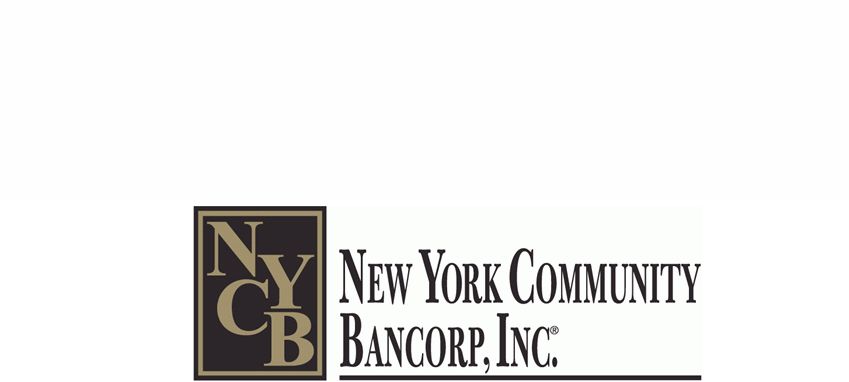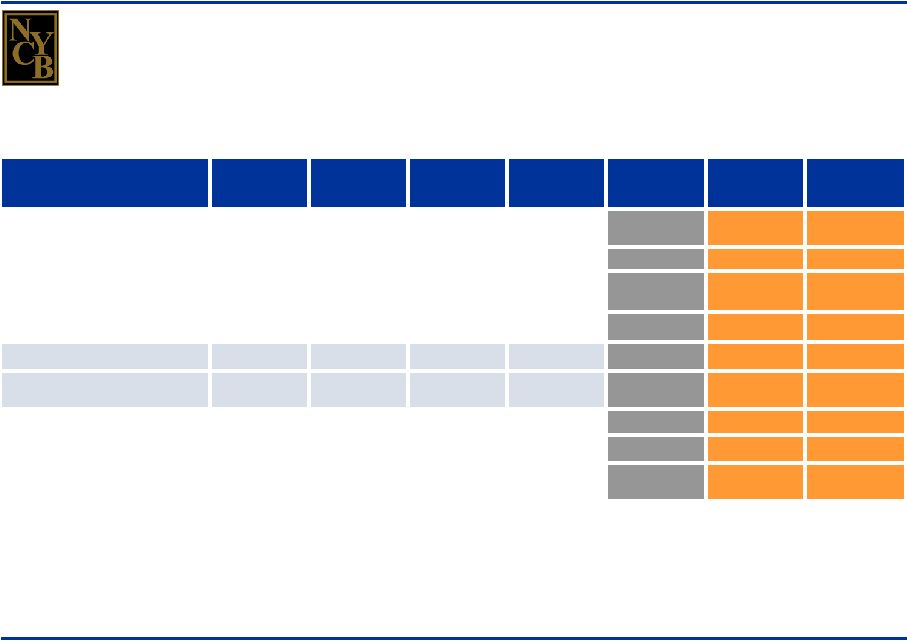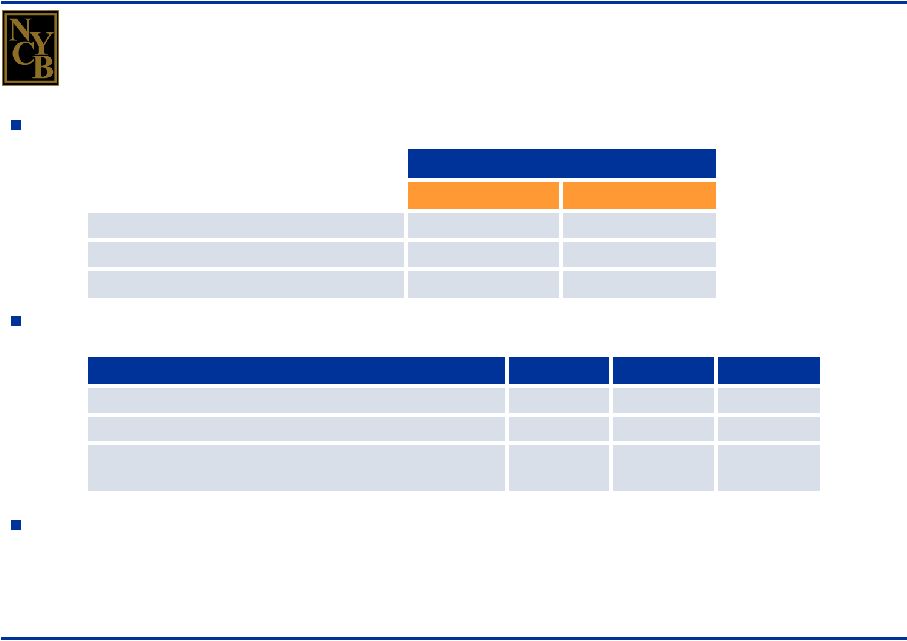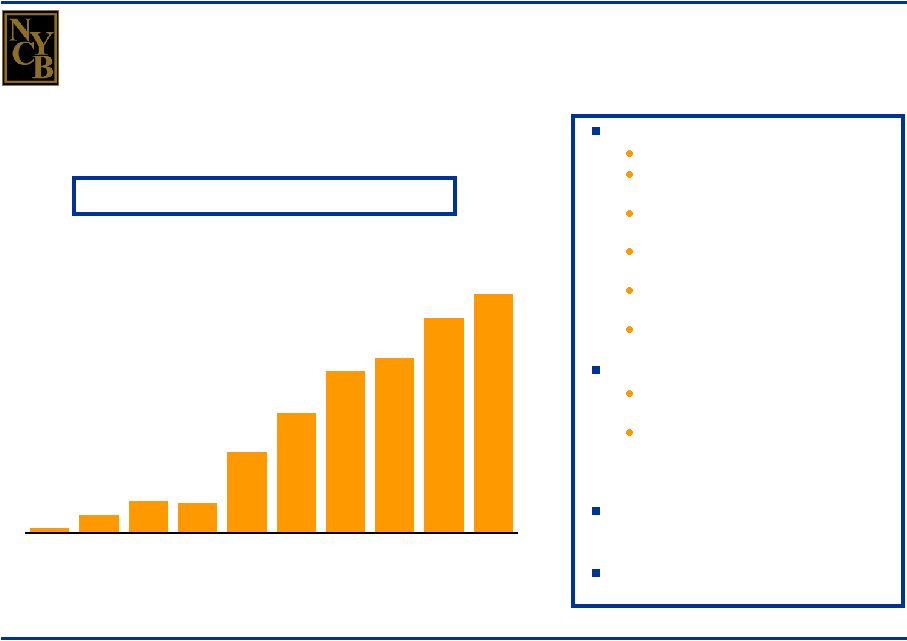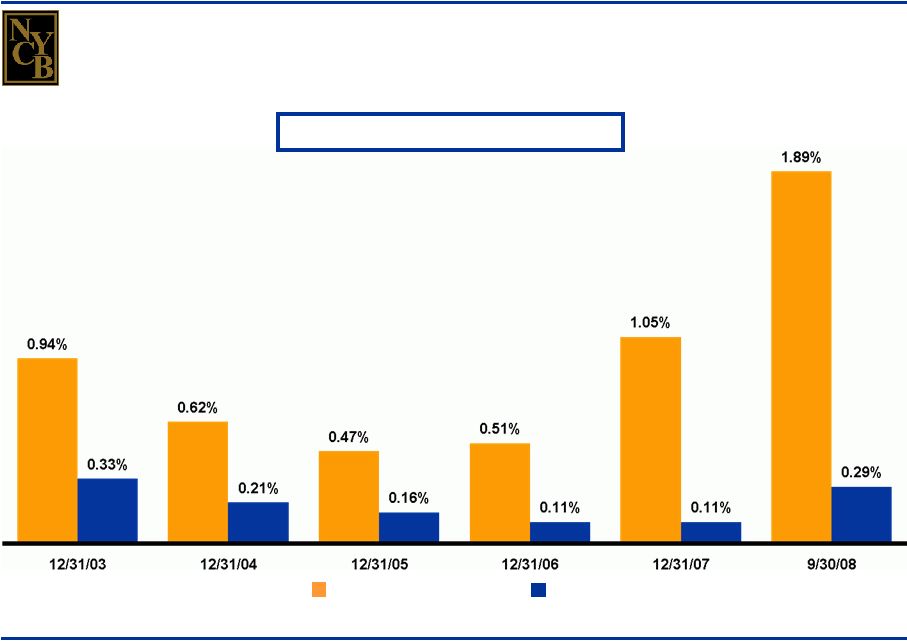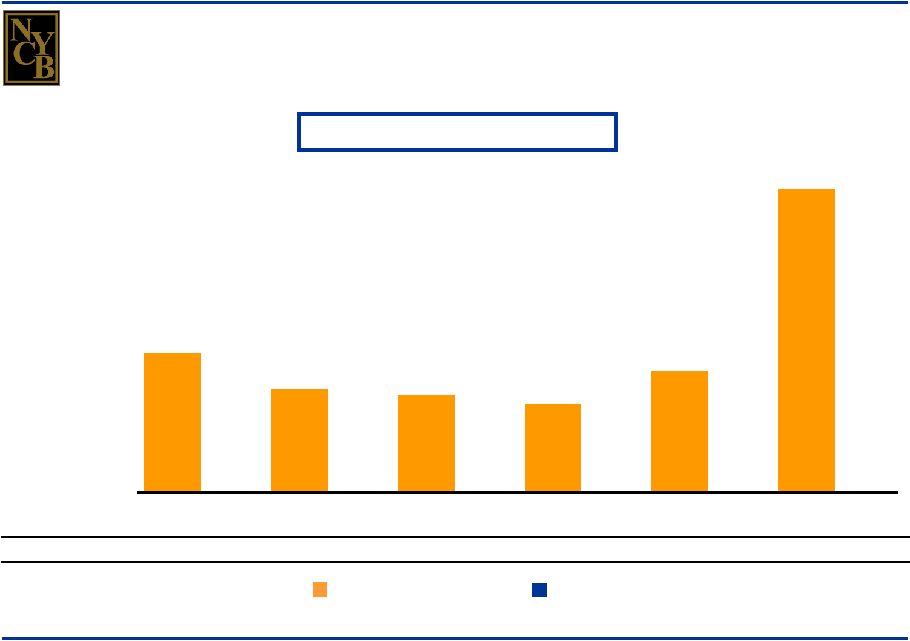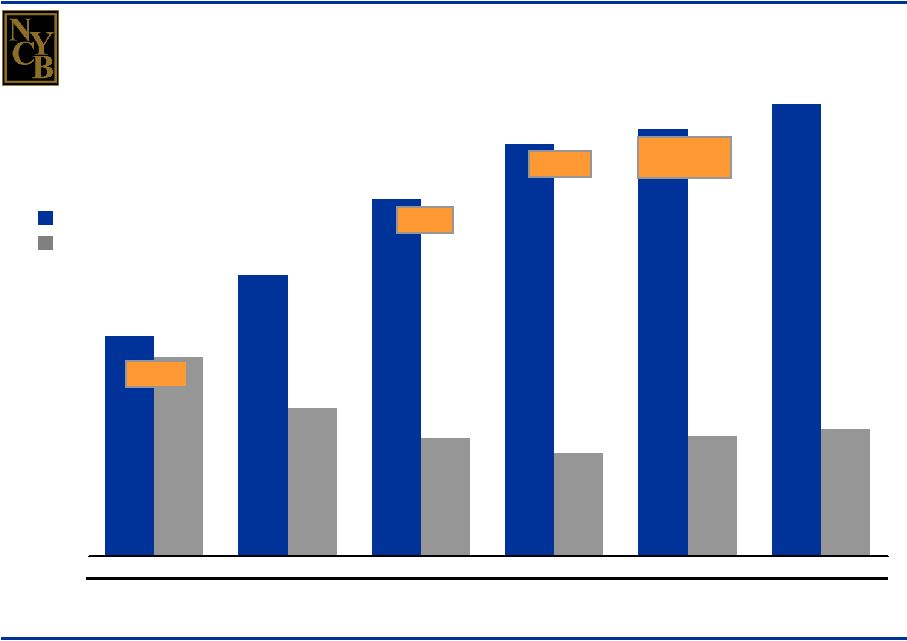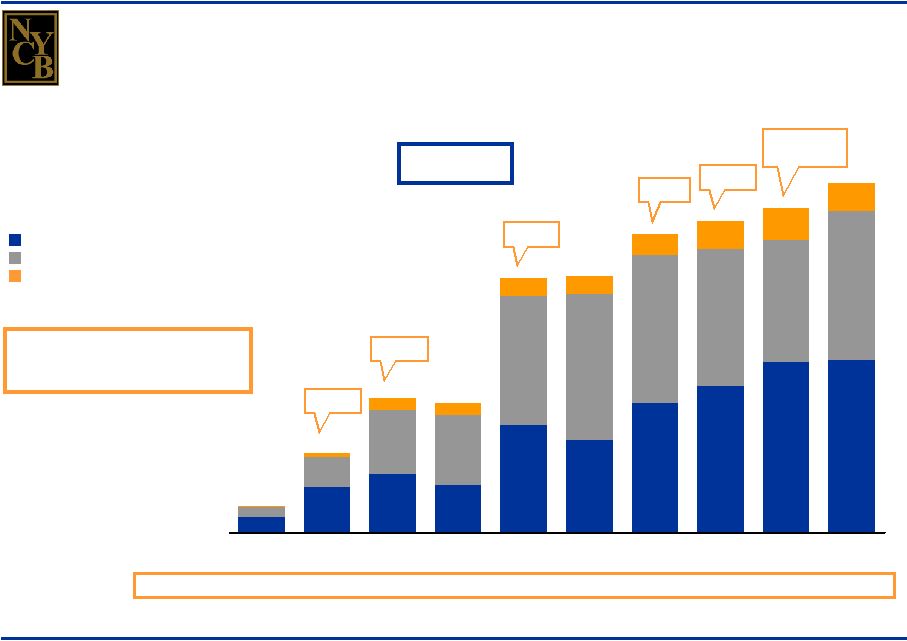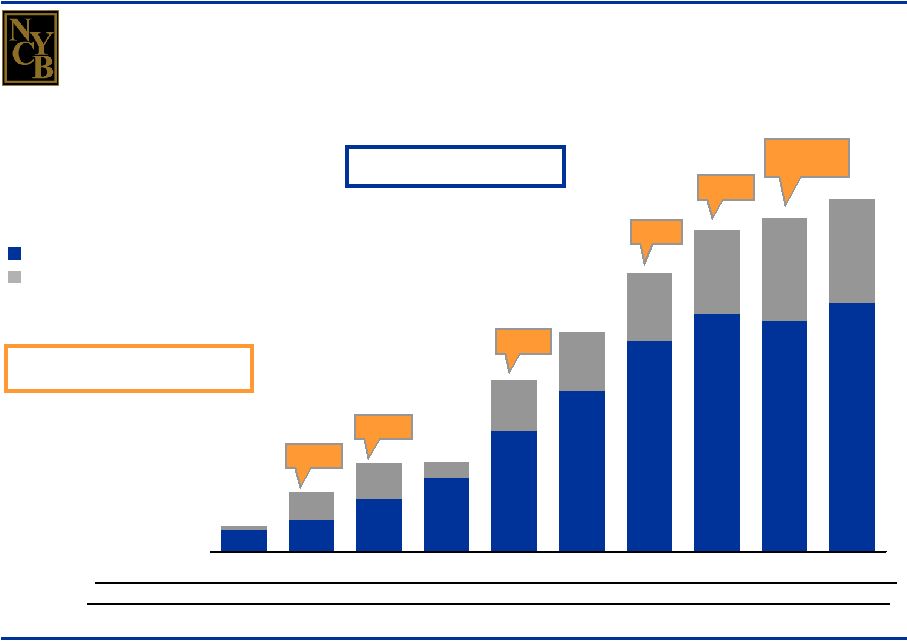Page 2 Forward-looking Statements and Associated Risk Factors This presentation, like many written and oral communications presented by New York Community Bancorp, Inc. and our authorized officers, may contain certain forward-looking statements regarding our prospective performance and strategies within the meaning of Section 27A of the Securities Act of 1933, as amended, and Section 21E of the Securities Exchange Act of 1934, as amended. We intend such forward-looking statements to be covered by the safe harbor provisions for forward-looking statements contained in the Private Securities Litigation Reform Act of 1995, and are including this statement for purposes of said safe harbor provisions. Forward-looking statements, which are based on certain assumptions and describe future plans, strategies, and expectations of the Company, are generally identified by use of the words “anticipate,” “believe,” “estimate,” “expect,” “intend,” “plan,” “project,” “seek,” “strive,” “try,” or future or conditional verbs such as “will,” “would,” “should,” “could,” “may,” or similar expressions. Our ability to predict results or the actual effects of our plans or strategies is inherently uncertain. Accordingly, actual results may differ materially from anticipated results. There are a number of factors, many of which are beyond our control, that could cause actual conditions, events, or results to differ significantly from those described in our forward- looking statements. These factors include, but are not limited to: general economic conditions and trends, either nationally or in some or all of the areas in which we and our customers conduct our respective businesses; conditions in the securities markets or the banking industry; changes in interest rates, which may affect our net income, prepayment penalties, and other future cash flows, or the market value of our assets; changes in deposit flows and wholesale borrowing facilities; changes in the demand for deposit, loan, and investment products and other financial services in the markets we serve; changes in our credit ratings; changes in the financial or operating performance of our customers’ businesses; changes in real estate values, which could impact the quality of the assets securing the loans in our portfolio; changes in the quality or composition of our loan or investment portfolios; changes in competitive pressures among financial institutions or from non-financial institutions; changes in our customer base; our ability to successfully integrate any assets, liabilities, customers, systems, and management personnel we may acquire into our operations, and our ability to realize the related cost savings within the expected time frames; potential exposure to unknown or contingent liabilities of companies we target for acquisition; our ability to retain key members of management; our timely development of new lines of business and competitive products or services in a changing environment, and the acceptance of such products or services by our customers; any interruption or breach of security resulting in failures or disruptions in customer account management, general ledger, deposit, loan, or other systems; any interruption in customer service due to circumstances beyond our control; the outcome of pending or threatened litigation, or of other matters before regulatory agencies, or of matters resulting from regulatory exams, whether currently existing or commencing in the future; environmental conditions that exist or may exist on properties owned by, leased by, or mortgaged to the Company; changes in estimates of future reserve requirements based upon the periodic review thereof under relevant regulatory and accounting requirements; changes in legislation, regulation, and policies, including, but not limited to, those pertaining to banking, securities, tax, environmental protection, and insurance, and the ability to comply with such changes in a timely manner; changes in accounting principles, policies, practices, or guidelines; operational issues stemming from, and/or capital spending necessitated by, the potential need to adapt to industry changes in information technology systems, on which we are highly dependent; the ability to keep pace with, and implement on a timely basis, technological changes; changes in the monetary, fiscal, and other policies of the U.S. Government, including policies of the U.S. Treasury, the Federal Reserve Board, and the FDIC; war or terrorist activities; and other economic, competitive, governmental, regulatory, and geopolitical factors affecting our operations, pricing, and services. For a discussion of these and other risks that may cause actual results to differ from expectations, please refer to our Annual Report on Form 10-K for the year ended December 31, 2007, including the section entitled “Risk Factors,” and our Quarterly Reports on Form 10-Q for the quarters ended June 30, 2008 and 2007, March 31, 2008, and September 30, 2007, on file with the U.S. Securities and Exchange Commission (the “SEC”). In addition, it should be noted that the Company routinely evaluates opportunities to expand through acquisition and frequently conducts due diligence activities in connection with such opportunities. As a result, acquisition discussions and, in some cases, negotiations, may take place at any time, and acquisitions involving cash, debt, or equity securities may occur. Furthermore, the timing and occurrence or non-occurrence of events may be subject to circumstances beyond the Company’s control. Readers are cautioned not to place undue reliance on these forward-looking statements, which speak only as of the date of this presentation. Except as required by applicable law or regulation, the Company undertakes no obligation to update these forward-looking statements to reflect events or circumstances that occur after the date on which such statements were made. Safe Harbor Provisions of the Private Securities Litigation Reform Act of 1995 | 